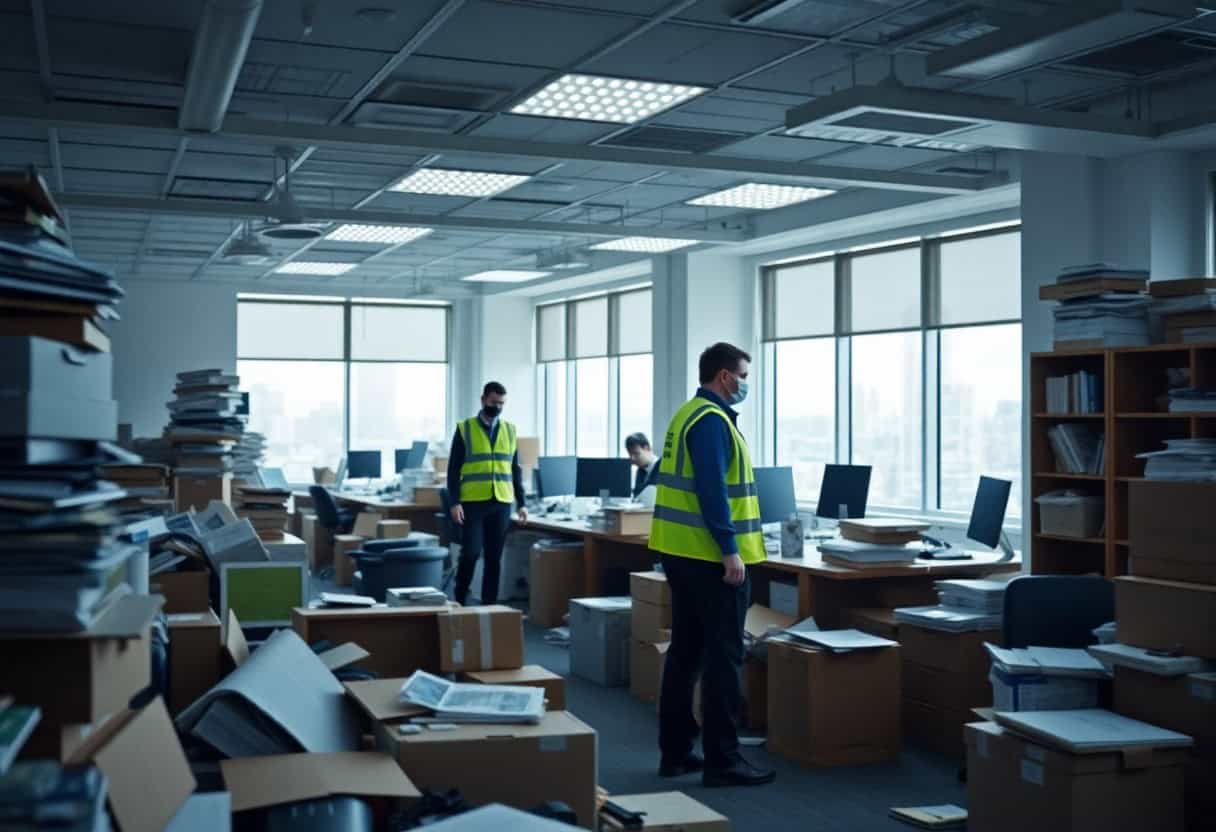As someone who has spent years working in construction and project management, I can attest that site clearance can make or break a project. Time and time again, I have seen how the success of a project hinges on correctly estimating the cost and timeline of site clearance. Unfortunately, it’s not always as straightforward as it seems. Unexpected delays, environmental concerns, and complying with local regulations can greatly impact both the budget and timeline of a project. Therefore, I am excited to provide a buying guide that walks you through the necessary steps to ensure that your site clearance is carefully planned, environmentally friendly, and within budget. In this guide, we will be exploring the impact of site clearance on project timelines and budgets, and provide tips on how to navigate each of the issues that may arise. So, whether you are a seasoned construction expert or a beginner, this guide is for you. Let’s dive in!
I recently learned a great tip to help me when I’m buying a new home: carefully review the site clearance plan. It’s essential to make sure that the plan includes all of the necessary steps and deadlines for the project.
I’m so glad I was told about this tip because I would have missed it otherwise. Site clearance plans can be complex, and it’s easy to overlook important details. By taking the time to review the plan before signing anything, I can be certain that the project will move along smoothly.
I start by asking the seller for a copy of the plan. This document outlines the scope of the project, including a timeline of all of the steps that need to be taken. It also lists the deadlines for each step.
Once I’ve received the document, I read it carefully and ask questions if something is unclear. For example, if I don’t understand the timeline, I’ll ask the seller to explain it to me. This helps me make sure I have a full understanding of the project before I agree to it.
Finally, I make sure that all of the deadlines are realistic. If I feel that they are too tight or too loose, I’ll bring it up and discuss it with the seller. Doing this ensures that the project will be completed without any unexpected delays.
This buying guide tip has helped me so much. By taking the time to review the site clearance plan, I can feel confident that the project will proceed according to plan.
Plan for unexpected delays in the site clearance that could extend the project timeline and budget.
When it comes to buying property or tackling big renovation projects, there are a lot of things to consider. One thing that often gets overlooked is the potential for unexpected delays in site clearance. By not accounting for these delays, you can end up with a longer timeline and a much bigger budget than you initially planned for.
The first step is to be realistic about the timeline. Clearing a site can take longer than expected, especially if there are unexpected issues like buried debris, complicated zoning regulations, or bad weather. Therefore, it’s important to account for these potential delays and add in extra time to your proposed timeline. For instance, if you think a site clearance will take three months, plan for four or even five months.
You’ll also want to budget accordingly. If there are delays, you may need to pay extra for additional labor or equipment. Even if everything goes according to plan, there may be unforeseen expenses like landfill fees or environmental assessments. By planning for these costs ahead of time, you won’t be caught off-guard and can adjust your budget accordingly.
it’s essential to factor in potential delays when planning a site clearance project. By doing this, you can avoid running into unexpected expenses and delays and finish your project confidently and within your budget.
Consider the environmental impact of the project before starting site clearance.
When you’re planning a landscaping project, it can be easy to get caught up in the excitement of designing your dream outdoor space. But before you start clearing your site, it’s important to take a step back and consider the environmental impact of your project.
One of the biggest effects landscaping can have on the environment is through habitat destruction. Before you start removing plants and trees, make sure you aren’t displacing local wildlife. Additionally, consider the potential ripple effect of removing plants from the ecosystem. For example, removing large numbers of plants can reduce oxygen production and contribute to climate change.
Another environmental consideration is the impact of your landscaping on your water supply. If you’re planning on installing a pond, fountain, or pool, make sure you aren’t drawing water from overly taxed sources. Additionally, plan your landscaping so that runoff doesn’t carry pollutants into nearby rivers or streams.
Finally, consider the environmental impact of using chemicals in your landscaping. Many common pesticides and herbicides can harm local wildlife and contribute to water pollution.
By keeping these environmental concerns in mind throughout the planning and clearance process, you can create a beautiful outdoor space that also respects and supports the surrounding ecosystem.
Talk to local authorities to ensure the project will comply with local regulations.
When it comes to home renovation projects, it’s important to make sure that everything is above board and compliant with local regulations. These regulations can vary from place to place, so it’s important to talk to local authorities to make sure you’re not stepping on any toes.
I learned this lesson the hard way when I decided to add a deck to my backyard. I drew up some plans, bought some materials, and got to work. I was making decent progress when a neighbor asked if I had gotten the proper permits. I had no idea what they were talking about.
Turns out, I needed a permit from the city to build a deck. I had no idea. I had to go through a lot of hoops and delays to get the permit, and it ended up costing me a lot more money than I had initially planned.
If I had just talked to the local authorities at the beginning of the project, this could have all been avoided. They would have let me know what permits and regulations I needed to comply with, and I could have planned accordingly.
So, if you’re planning on doing any renovations or construction projects on your property, make sure to talk to the local authorities first. It may seem like a hassle, but it’ll save you time, money, and headache in the long run.
Estimate the cost of the site clearance as accurately as possible to ensure that the budget allocation is sufficient.
As someone who recently went through the process of buying a property and developing it into my dream home, I cannot stress enough the importance of estimating the cost of site clearance accurately. Before starting any kind of construction, the site must be cleared of any debris, trees, or shrubs. This process is not only essential but also expensive.
It’s crucial to allocate enough funds for site clearance to ensure that the project doesn’t run into any financial issues. An inaccurate estimate could lead to delays in the development process, additional expenses, and a stressful experience.
When estimating the cost of site clearance, it’s essential to consider the type of property you’re developing and the landscape of the area. For example, if the property is located on a hill, the cost may be higher because it requires more effort to remove trees and debris. Moreover, if there are any hazardous materials present on the property, such as asbestos, that also needs to be considered in the cost estimate.
It’s always better to hire a professional and experienced site clearance company to conduct this task since they have the required tools and expertise to get the job done. Don’t hesitate to ask for their help in estimating the cost, as it will benefit you in the long run.
site clearance is not only a crucial step in property development but also an essential aspect of construction. Estimate the cost of site clearance accurately and allocate sufficient funds to ensure that the project runs smoothly and stress-free.
Conclusion
Site clearance is a critical aspect of any construction project that can significantly impact the timeline and budget of the project. It is essential to carefully review the site clearance plan and plan for unexpected delays that could arise. Additionally, considering the environmental impact of the project and complying with local regulations are crucial for a successful site clearance. By following these guidelines, you can ensure that your construction project is completed efficiently, on time, and within budget, which will improve your overall quality of life.


